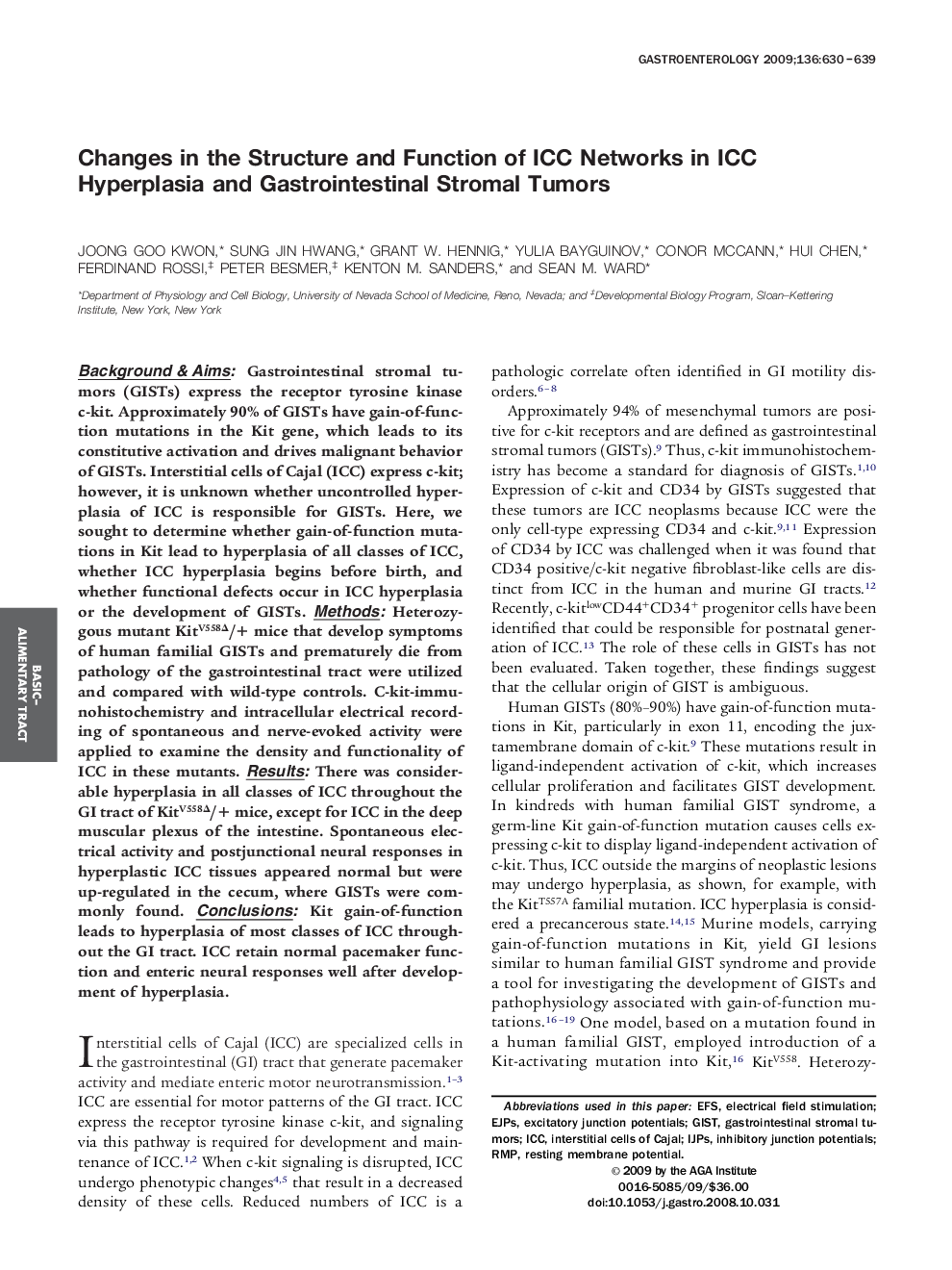| Article ID | Journal | Published Year | Pages | File Type |
|---|---|---|---|---|
| 3297859 | Gastroenterology | 2009 | 10 Pages |
Background & AimsGastrointestinal stromal tumors (GISTs) express the receptor tyrosine kinase c-kit. Approximately 90% of GISTs have gain-of-function mutations in the Kit gene, which leads to its constitutive activation and drives malignant behavior of GISTs. Interstitial cells of Cajal (ICC) express c-kit; however, it is unknown whether uncontrolled hyperplasia of ICC is responsible for GISTs. Here, we sought to determine whether gain-of-function mutations in Kit lead to hyperplasia of all classes of ICC, whether ICC hyperplasia begins before birth, and whether functional defects occur in ICC hyperplasia or the development of GISTs.MethodsHeterozygous mutant KitV558Δ/+ mice that develop symptoms of human familial GISTs and prematurely die from pathology of the gastrointestinal tract were utilized and compared with wild-type controls. C-kit-immunohistochemistry and intracellular electrical recording of spontaneous and nerve-evoked activity were applied to examine the density and functionality of ICC in these mutants.ResultsThere was considerable hyperplasia in all classes of ICC throughout the GI tract of KitV558Δ/+ mice, except for ICC in the deep muscular plexus of the intestine. Spontaneous electrical activity and postjunctional neural responses in hyperplastic ICC tissues appeared normal but were up-regulated in the cecum, where GISTs were commonly found.ConclusionsKit gain-of-function leads to hyperplasia of most classes of ICC throughout the GI tract. ICC retain normal pacemaker function and enteric neural responses well after development of hyperplasia.
